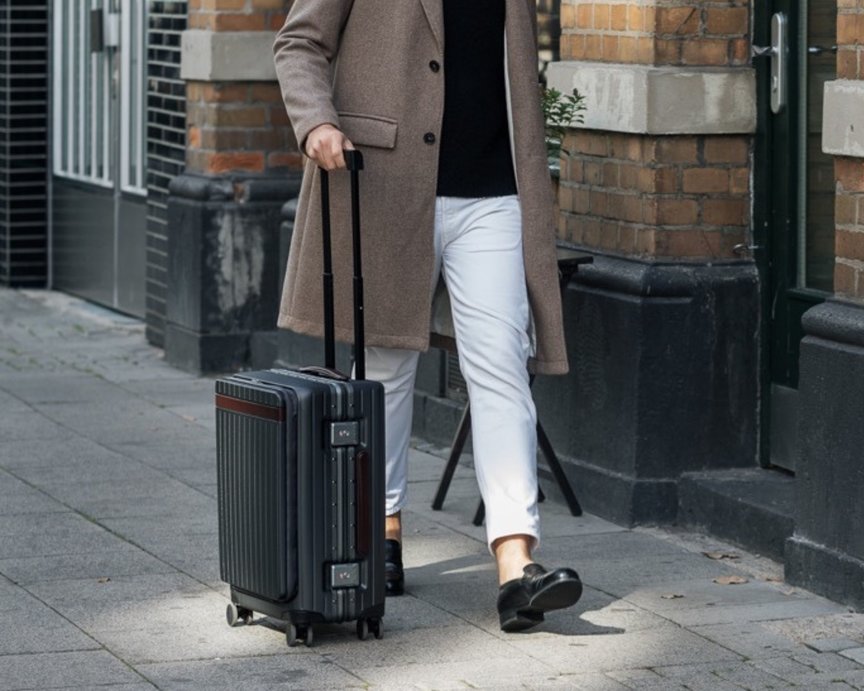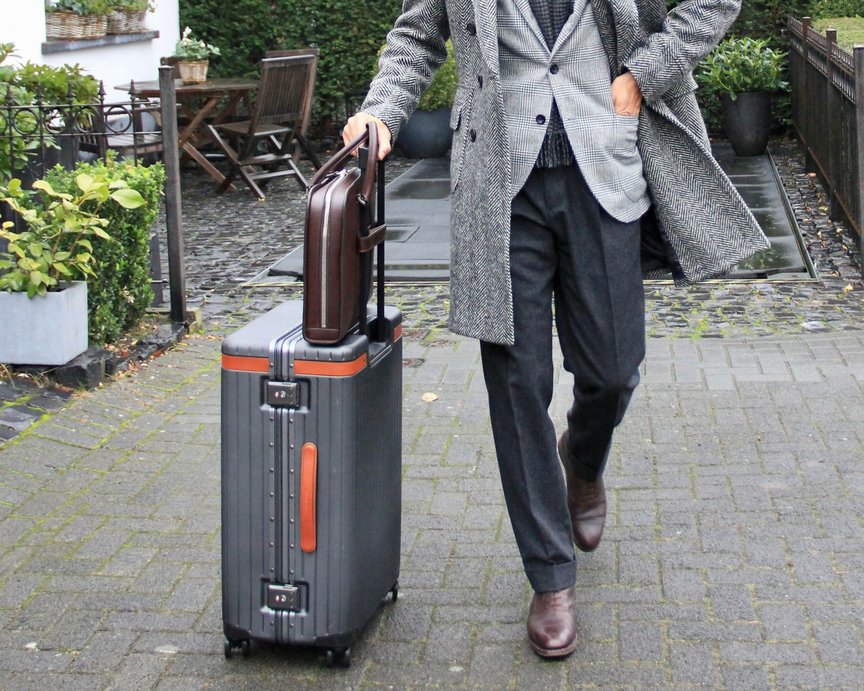Air travel is a stressful endeavour. From unforeseen traffic jams to misunderstood visa rules and last-minute gate changes, there’s a myriad of potential hurdles to overcome before lift-off.
How to measure luggage
Published 2 years ago

While its well-known overweight suitcases entail a hefty extra fee, one airline regulation can slip even the most frequent flyer’s mind: luggage size restrictions.
Learning how to measure luggage is a skill every air traveller should master. And that’s precisely what we’re covering in this post.

Why is it important to measure luggage?
Size matters in the aviation industry. As aircraft have limited space in the hull, carriers must set strict size limits to ensure everyone’s luggage will squeeze inside. Moreover, baggage handlers must take extra steps to safely manoeuvre oversized bags, which requires additional manpower and loading times.
Size dimensions are equally crucial for carry-on bags. Overhead lockers have minimal wriggle room, especially now that most globetrotters use carry-on to avoid check-in luggage fees. To streamline the boarding process, every cabin bag must be small enough to slide easily into its allocated space.
The same applies to so-called personal items, those tiny titbits like camera or laptop bags that tuck under your seat. Should one not fit properly and protrude into the aisle, it’ll create a major headache for the safety-conscious cabin crew.
Airlines have good reason to be concerned about size. But why should you, the avid air travel aficionado, need to worry about such trivial things? It’s simple. Failure to comply with strict airline-imposed rules may lead to an eye-watering oversized baggage fee. And yes, they do check, regardless of your preferred luggage type.
Check-in personnel initially judge a suitcase by eye. If it looks excessively bulky, they’ll break out the measuring tape to determine the size. Carry-on luggage typically gets eye-balled by a gate agent, who will force any suspiciously-large bag owners to measure their cargo in a metallic, airline regulation-sized frame.
Oversized luggage doesn’t just leave you vulnerable to fines. On small or heavily booked aircraft, the airline may refuse to transport your oversized bag. Leaving you without your everyday essentials upon touchdown.

How to measure luggage
Avoid falling foul of hefty airline fines by following this simple, step-by-step guide.
I. Check airline restrictions
Luggage size restrictions vary between airlines and sometimes between domestic and international routes. It’s worth checking the regulations on every leg to play it safe.
Most airlines measure check-in luggage in linear dimensions, which means the sum of the length, width and height. The most common linear limit for check-in luggage is 62 inches, though it’s prudent to confirm. EasyJet, for example, allows up to 108 linear inches (275 cm) for check-in bags, while United Airlines permits 62 linear inches (157 cm) — that’s a pretty significant difference.
Some carriers, however, forgo linear dimensions in lieu of specific size restrictions for each check-in bag dimension. British Airways, for example, requires each checked bag to be less than 35 x 30 x 17 inches (90 x 75 x 43 cm).
Carry-on luggage is never measured in linear dimensions, as each bag must fit within the compact overhead locker. Although the most common carry-on size limit is 56 x 36 x 23 cm (22 x 14 x 9 inches), many airlines stray from the norm. Again, check your airline’s website before leaving for the airport.
The rule of thumb for a personal item is it must fit entirely under your seat. That said, not all aircraft seats are the same size, and many airlines set strict size limits. The most common maximum personal item dimensions are 45 x 35 x 20 cm (18 x 14 x 8 inches), though these can differ between airlines.
If you can’t find the details in your booking confirmation email, search for size restrictions on the relevant airline’s webpage.

II. Check luggage manufacturer guidelines
Now you know the relevant size restrictions, head to your bag manufacturer’s website to review its luggage dimensions.
Don’t take all manufacturer claims of carry-on or check-in-sized luggage as gospel. While a bag marketed as a carry-on will comply with most airline size regulations, it may prove too bulky for others. Low-cost carriers typically have more restrictive regulations than full-service airlines.
If you’re sporting a soft-shell suitcase (as opposed to a rigid hard case number), the final size will vary depending on how much stuff you fit inside. Plus, less reputable bag makers may publish inaccurate dimensions, or you could unwittingly mistake inches for centimetres.
With that in mind, it’s best to take a quick measurement at home, too (we’ll get to that in a minute).
III. Pack your bags
Pack your suitcase before digging up the measuring tape. Otherwise, your over-stuffed bag might expand and exceed the standard size.
It’s also worth doing a bit of research on how to pack a suitcase first so you can maximise available space. And if you’re on a business trip (or just like to dress nice), take a few minutes to learn how to fold a shirt for travel.

VI. Measure your luggage
Crack out your tape measure to determine the length, width, and height of each bag. As not all luggage is evenly shaped, ensure you measure from the widest point of each dimension.
Include all the dangling or protruding bits like handles, tags and wheels. However, there’s no need to factor in the full length of a retractable handle, as you can slide it back in at the check-in gate.
Jot down each dimension as you measure. Once you’ve got your baggage measurements ready, compare them with the airline’s size restrictions. When calculating linear dimensions, add the length, width and height to reach the final figure.
Repeat this process for all your luggage (carry-on, check-in, and personal items), then double-check you’re comparing each piece to the correct airline size restriction.

V. Weigh your luggage
Size is only one piece of the puzzle. To avoid a soul-crushing fine, it’s crucial to ensure all your bags weigh less than the mandated airline weight limits.
The most common check-in weight limit is 23kg (50 pounds), while carry-on bags must usually weigh less than 7 or 10 kg (10 to 15 pounds). However, these figures vary from airline to airline and between domestic and international flights. Again, it’s essential to research the specific restrictions for each leg.
The most accurate way to weigh your bags is by using a digital luggage scale. If you don’t have one handy, weigh yourself on a standard bathroom scale, then again while carrying your bag. Subtract the first measurement from the second to determine the weight of your bag. For more detailed information on this process, see our post on how to weigh luggage for air travel.

Takeaway
Researching airline size requirements and comparing them against your own luggage measurements is the only surefire way to avoid oversized baggage fees. But remember, every airline has different regulations, and most won’t hesitate to crack out the measuring tape if your bag looks overly cumbersome.
Play it safe by following the steps outlined in this post. That way, you can prevent any frustrating last-minute surprises and take the stress out of flying. And let’s face it, navigating an airport is already an anxiety-inducing ordeal.